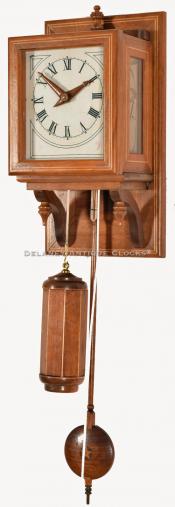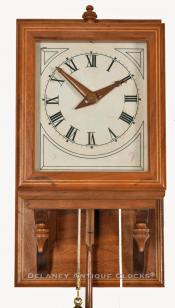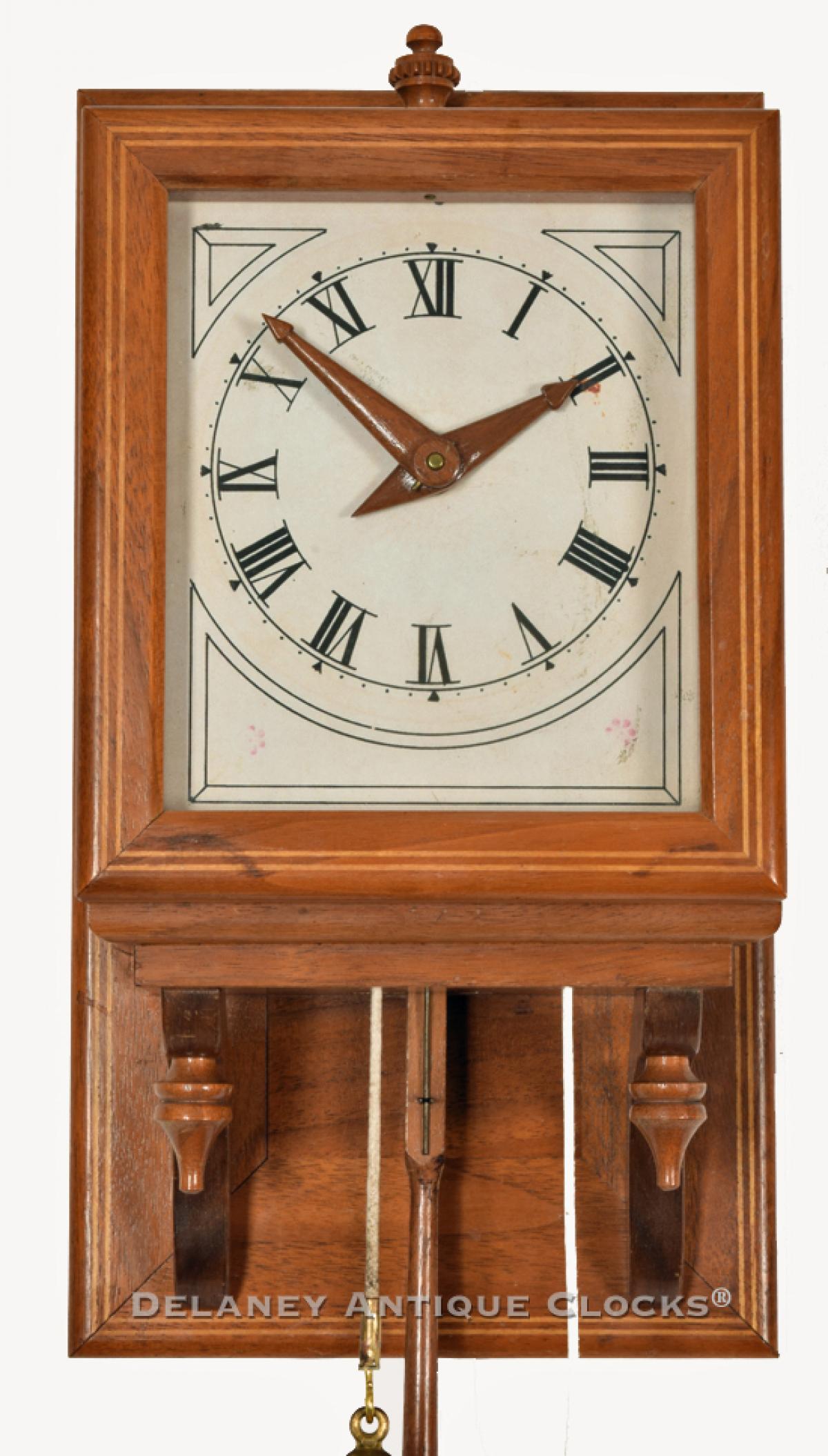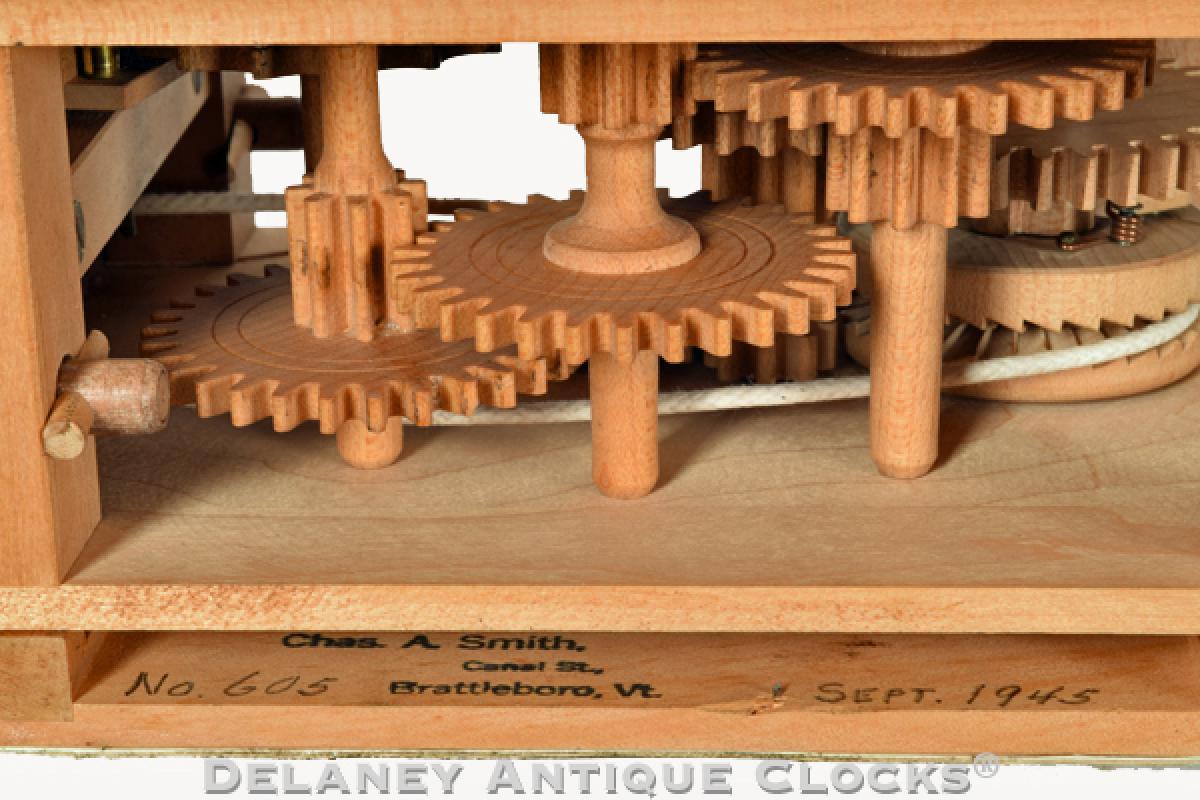Charles Alvah Smith of Brattleboro, Vermont. Wag on the wall. No. 605. One of the last. 219030.
This very decorative example is signed and dated. It was made in September of 1945 and is numbered “605.” Apparently, all of his production is signed, dated, and numbered by the clockmaker. The case is constructed in walnut and is lined inlaid. The joinery is tight and well-executed. The wooden geared movement is wonderfully made and nicely detailed. This example features a rolling verge escapement. This clock is powered by a weight that is decoratively designed. It features an eight-sided wooden canister that is lined inlaid and is well-built. The wooden counterweight is also inlaid and nicely detailed. The length of the drop determines the length of the run. This example will run for almost two days from a normal mounting position. The pendulum bob is also inlaid. The decoration is in the form of a star. It is suspended by a turned wooden rod. The dial is paper and applied to a wooden backboard. The hands are maple and indicate the time on a time ring that features Roman-style numerals.
This clock measures approximately 26 inches long from the top of the bonnet to the bottom of the pendulum. The backboard is approximately 12.75 inches long and 7 inches wide. This clock sits out from the wall, 5.25 inches.
It is inventory number 219030.
Charles Alvah Smith was a maker of very interesting wooden cased and wooden geared clocks. He was born on his grandfather’s farm in Guilford, Vermont, on November 3, 1866. His parents, Sanford Alvah Smith and Ellen (Hunt) Smith, had three children. His father, Sanford, owned and operated a business that made carriages for children and later other various wood products like wooden sleds, tricycles, and children’s toys. Charles joined this business in 1889 and quickly moved up through the company ranks. It is here that he learned the trade of fine woodworking. Sometime around 1820, Charles retired after 35 years of involvement in the family business. While in retirement, he developed many relationships with various local business enterprises as a designer. A clever person, he was awarded as many as six patents that are mechanical in nature. One patent is for a foot pedal starter used in an automobile. A patent second was for a circular wood-cutting table saw. An example of his involvement with local businesses was his involvement with the Franklin Motor Car Company. He advised their planning and production divisions.
Charles was a Yankee. He collected wood scraps from his furniture-making business and began making clocks in his home workshop. He first presented them as gifts and soon went into production sometime in 1931 until he died in 1946. During this time, he produced approximately 619 clocks. In fact, No. 619 is a clock that I have seen. Charles made each clock from start to finish. He made the entire clock to his very high-quality standards. For additional information regarding his interesting person, please read Charles Alvah Smith: Vermont Maker of Unusual Wood Clocks, written by John M. Anderson. This is a soft cover, 60-plus page description of this ingenious Yankee clockmaker, which was published by the National Association of Watch and Clock Collectors (NAWCC) in December of 1990.
We have owned and seen a fair number of these clocks over the years. Some of the numbers include numbers 10,109,138,162, 203, 266, 366, 368, 484, 493, 495, 506, 573, 605 and 607.








